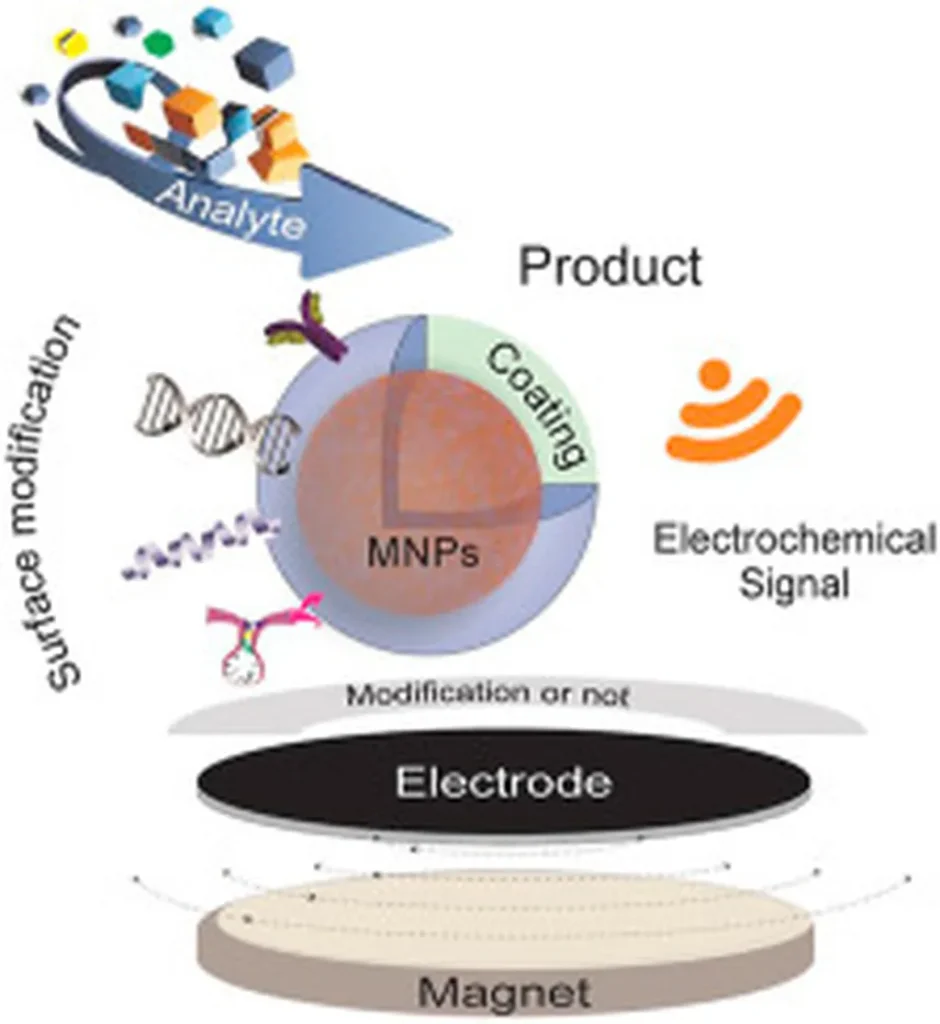In a groundbreaking development poised to revolutionize bio-related applications, researchers have unveiled a novel type of magnetic nanoparticle that could transform the way we sense and image viscosity. The study, led by Dr. João M. Costa from the University of Aveiro in Portugal, introduces a stable aqueous colloidal suspension of Al-doped ε-Fe₂O₃ nanoparticles, which exhibit a strong coupling between their magnetic moment and crystal lattice. This unique property enables them to follow a rigid dipole model, making them ideal for viscosity sensing and imaging.
The implications of this research are vast, particularly for the energy sector. Viscosity is a critical parameter in many industrial processes, including oil and gas extraction, where real-time monitoring can significantly enhance efficiency and safety. Traditional methods of viscosity measurement are often invasive and time-consuming, but the use of these magnetic nanoparticles could enable non-invasive, real-time 3D viscosity imaging with sub-second resolution.
“These nanoparticles are not just stable and cell-compatible; they open up new avenues for bio-applications,” says Dr. Costa. “The ability to perform 3D viscosity imaging with such high resolution and speed is a game-changer. It’s like having a superpower to see and measure the flow of liquids in real-time, which can be incredibly valuable in various industries, including energy.”
The nanoparticles’ unique properties allow them to be used in magnetic particle imaging (MPI) scanners, a tomographic technique capable of imaging at kilohertz rates. This means that viscosity changes can be monitored in real-time, providing invaluable data for process optimization and control.
The study, published in the Journal of Physics Materials (JPhys Materials), represents a significant advancement in the field of magnetic nanoparticles. The potential applications extend beyond the energy sector, with possibilities in biomedical imaging, environmental monitoring, and even food processing.
As we look to the future, the development of these rigid-dipole magnetic nanoparticles could pave the way for more sophisticated and efficient sensing technologies. The ability to image viscosity in 3D with such high resolution and speed could lead to breakthroughs in various fields, ultimately enhancing our understanding and control of fluid dynamics in complex systems.
In the words of Dr. Costa, “This is just the beginning. The potential of these nanoparticles is immense, and we are excited to explore the numerous applications that lie ahead.” As the research community delves deeper into this innovative technology, we can expect to see significant advancements in the way we sense and image viscosity, with far-reaching implications for industry and beyond.

